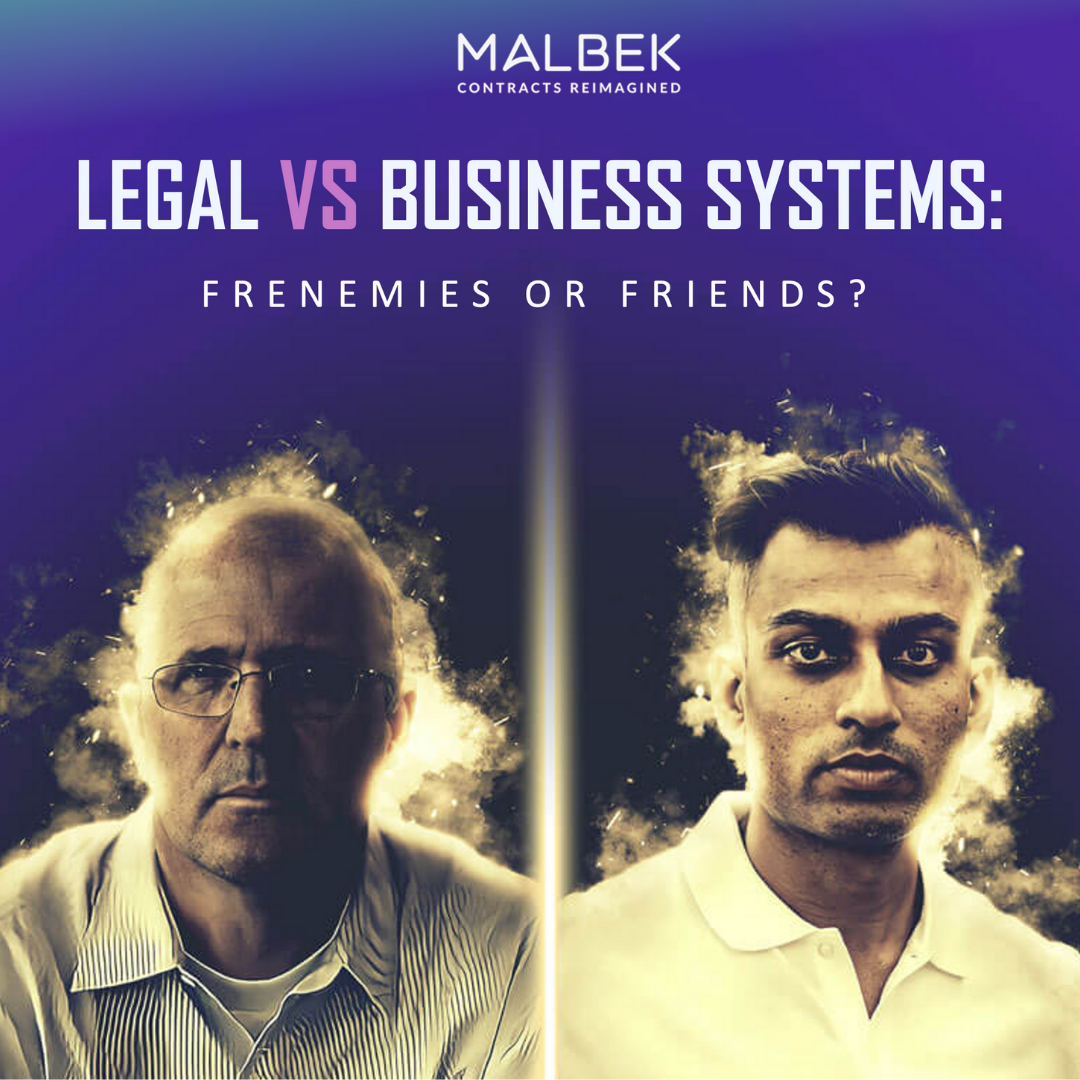Key Takeaways: Legal Vs. Business Systems
Last week we were lucky enough to be joined by Ronak Ray, General Counsel of Pantheon, and Judist Crews, Director of Business Systems at Revalize, to settle an ongoing debate—can legal and business systems teams be friends?
Knowing these teams don’t always see eye-to-eye, we sat them down to address some common stereotypes and answer the hard questions around contract management.
Here’s a recap of the most memorable moments and key takeaways from the discussion:
#1 DON’T ASSUME
“My favorite introduction I tend to get is, ‘This is legal, and they have some legal stuff to think about and help us through.’”
-Ronak Ray
The truth is, when you engage with the legal team as if they are in a box, it’s very difficult for legal to engage beyond the box. Ronak said it best when he said, “The modern lawyer is creative and considerate of all impacts to the business.” And we ought to start treating them as such, shouldn’t we? Lawyers are creative and often entrepreneurial minded, too.
Sometimes legal is more focused on solving the problem rather than identifying the actual solution that’s both scalable and efficient across the business.”
– Judist Crews
Judist rebutted with the argument that gathering legal requirements can be a burdensome process, and legal isn’t always focused on thinking strategically about the future as much as they are putting out fires.
The takeaway: Business users don’t know what they don’t know, and it’s never the right call to assume when it comes to understanding either team’s requirements or priorities. When businesses are evaluating CLMs, it’s important to look for a solution that can unite business users by meeting them where they are and making it easy for them to connect around contract management.
#2 GIVE LEGAL A SEAT AT THE BUSINESS TABLE
“To be effective, legal needs to understand the business and the decisions that are driving legal behavior.”
– Ronak Ray
This underscores an important paradigm shift we’re seeing more and more, which is that legal is no longer viewed as the “cost center” or “sales prevention department” at an organization. If included, they can be valuable strategic partners and problem solvers, helping businesses mitigate risk every step of the way.
“If you want to add value to the business, you need to be proactive not reactive.”
– Judist Crews
Judist also made the comment that we’ve heard many times when it comes to collaborating with legal that lawyers tend to look backward with caution rather than forward with creativity. But Ronak slammed that idea when he said, “Legal can’t see through walls. Bring us into the conversation. Give us the challenge and we’ll surprise you.”
The takeaway: Legal’s strategic role is changing, and all change comes with growing pains. As legal teams shift their focus to these larger strategic business initiatives, they’ll need assistance with the administrative tasks that tend to consume their time. That’s where Malbek comes in! Our AI-infused platform has been proven to free up legal teams’ time on contracts by 50% or more, giving them more time to collaborate with business systems and anticipate business needs early on.
#3 NO MORE LEGALESE PLEASE
“People always say, if you could just talk like most people do, that would be very helpful.”
– Ronak Ray
Ronak reinforced that in order to work together, every team needs to speak the same language. The best way to do this? Adopt a common platform that simplifies the interactions and collaboration between legal and business systems.
“Let’s be honest here, does anyone actually read contracts?”
– Judist Crews
Judist made us all laugh with that quote, but he also reminded us that adopting a system takes time. He shared some wisdom when he said, “A good strategy drives revenue, a good system saves cost and drives operations, and good design will create an experience that attracts more customers.” In But in order for these systems to add value to an organization, everyone needs to clearly understand why the systems are needed.
The takeaway: Business systems is very busy, too, and legal teams aren’t always the most tech-savvy due to their cautious nature. That’s why organizations need configurable and self-service platforms that provide visibility across the organization in one common language. A great example of this? Malbek’s plug and play integration with Salesforce, allowing sales teams to manage their contracts in a familiar system with approved clauses.
#4 SOMETIMES “NO” JUST MEANS “LET’S FIND A WAY”
“Sometimes we say no just to see if people are listening.”
– Ronak Ray
If you’ve ever been told “no” several times by legal, you may feel a little jaded. We get it, and so does Ronak. However, he pointed out that “no” is just there to make other teams pause, and it’s often legal’s way of getting other teams to slow down and look at the issue from another angle so it can be solved in a way that’s good for the business as a whole.
“Organizations need to adapt if they want to thrive.”
– Judist Crews
And the same is true for internal departments. Without evolution, there is no progress! Business systems can’t implement the best solutions for the organization without thinking first about the people who will use them.
The takeaway: Legal and business teams have similar pains. We know that legal is responsible for risk mitigation, but as they evolve and focus on more strategic initiatives, they will need a contract management platform that is easy to use and intuitive. That way, they can rely less on business systems.
In the end, we found that legal and business systems both have valid points, but the best thing they can do for the business is unite around the same goals and support each other in the process.
Click here to watch the full recording for more insights on how business systems and legal teams can work better together and get expert advice from Ronak and Judist on launching a CLM platform that works for everyone.





